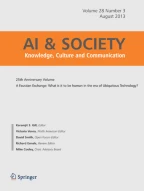Abstract
Multi-level institutional designs with distributed power and authority arrangements among federal, state, regional, and local government agencies could lead to the emergence of differential patterns of socioeconomic and infrastructure development pathways in complex social–ecological systems. Both exogenous drivers and endogenous processes in social–ecological systems can lead to changes in the number of “basins of attraction,” changes in the positions of the basins within the state space, and changes in the positions of the thresholds between basins. In an effort to advance the theory and practice of the governance of policy systems, this study addresses a narrower empirical question: how do intergovernmental institutional rules set by federal, state, and regional government agencies generate and sustain basins of attraction in funding infrastructure projects? A pattern-oriented, agent-based model (ABM) of an intergovernmental network has been developed to simulate real-world transportation policy implementation processes across the federal, the state of Vermont, regional, and local governments for prioritizing transportation projects. The ABM simulates baseline and alternative intergovernmental institutional rule structures and assesses their impacts on financial investment flows. The ABM was calibrated with data from multiple focus groups, individual interviews, and analysis of federal, state, and regional scale transportation projects and programs. The results from experimental simulations are presented to test system-wide effects of alternative multi-level institutional designs, in particular different power and authority arrangements between state and regional governments, on the emergence of roadway project prioritization patterns and funding allocations across regions and towns.
Similar content being viewed by others
Explore related subjects
Discover the latest articles, news and stories from top researchers in related subjects.References
Agranoff R, McGuire M (2003) Inside the matrix: integrating the paradigms of intergovernmental and network management. Int J Public Adm 26:1401–1422
Batty M (2007) Cities and complexity: understanding cities with cellular automata, agent-based models, and fractals. The MIT Press, Cambridge, MA
Baumgartner FR, Jones BD (2002) Policy dynamics. University of Chicago Press, Chicago, IL
Grimm V, Revilla E, Berger U, Jeltsch F, Mooij WM, Railsback SF et al (2005) Pattern-oriented modeling of agent-based complex systems: lessons from ecology. Science 310:987–991
Henson SM, Costantino RF, Desharnais RA, Cushing JM, Dennis B (2002) Basins of attraction: population dynamics with two stable 4-cycles. Oikos 98:17–24
Holling CS (1973) Resilience and stability of ecological systems. Annu Rev Ecol Syst 4:1–23
Ingram P, Robinson J, Busch ML (2005) The intergovernmental network of world trade: IGO connectedness, governance, and embeddedness. Am J Sociol 111:824–858
Intermodal Surface Transportation Efficiency Act of 1991, Pub. L. No. 102–240, 105 Stat 1914
Janssen MA, Ostrom E (2006) Empirically based, agent-based models. Ecol Soc 11(2): 37. http://www.ecologyandsociety.org/vol11/iss2/art37/
Jones C, Hesterly WS, Borgatti SP (1997) A general theory of network governance: exchange conditions and social mechanisms. Acad Manag Rev 22:911–945
Kauffman S, Peterson C, Samuelsson B, Troein C (2004) Genetic networks with canalyzing Boolean rules are always stable. PNAS 101:17102–17107
Kickert WJM, Klijn EH, Koppenjan JFM (1997) Managing complex networks: strategies for the public sector. Sage, London
Kingdon JW (1984) In agendas, alternatives, and public policies. Little, Brown and Company, Boston
Klijn EH (1996) Analyzing and managing policy processes in complex networks. Adm Soc 28:90–119
Koliba C, Meek J, Zia A (2010) Governance networks in public administration and public policy. CRC Press, Boca Raton, FL
Krugman P (1994) Complex landscapes in economic geography. Am Econ Rev 84:412–416
Marsh D, Rhodes RAW (1992) Policy networks in British government. Clarendon Press, Oxford
Milward HB, Provan KG (1998) Measuring network structure. Public Adm 76:387–407
Neary JP (1978) Dynamic stability and the theory of factor-market distortions. Am Econ Rev 68:671–682
Ostrom E (2005) Understanding institutional diversity. Princeton University Press, Princeton, NJ
O’Toole LJ (1997) Treating networks seriously: practical and research-based agendas in public administration. Public Adm Rev 57:45–52
Page F, Wooders M (2009) Strategic basins of attraction, the path dominance core, and network formation games. Games Econ Beh 66:462–487
Rhodes RA (1997) Understanding governance: policy networks, governance, reflexivity and accountability. Open University Press, Maidenhead
Sabatier P, Jenkins-Smith H (1993) Policy change and learning: an advocacy coalition approach. Westview Press, Boulder, CO
Scheffer M, Carpenter S, Foley JA, Folke C, Walker B (2001) Catastrophic shifts in ecosystems. Nature 413:591–596
Taleb NN (2010) The Black Swan: the impact of the highly improbable fragility. Random House, New York, NY
Vandermeer J, Granzow de la Cerda I, Perfecto I, Boucher D, Ruiz J, Kaufmann A (2004) Multiple basins of attraction in a tropical forest: evidence for nonequilibrium community structure. Ecology 85:575–579
Walker B, Holling CS, Carpenter SR, Kinzig A (2004) Resilience, adaptability and transformability in social-ecological systems. Ecol Soc 9:5. http://www.ecologyandsociety.org/vol9/iss2/art5
Wuensche A (1999) Classifying cellular automata automatically: finding gliders, filtering, and relating space-time patterns, attractor basins, and the Z parameter. Complexity 4:47–66
Zia A, Koliba C (2011) Accountable climate governance: dilemmas of performance management across complex governance networks. J Comp Policy Anal Res Pract 13:479–497
Acknowledgments
We gratefully acknowledge funding from the United States Department of Transportation via the University of Vermont Transportation Research Center and National Science Foundation EPS-1101317. Authors bear complete responsibility for all the data and information provided in this article.
Author information
Authors and Affiliations
Corresponding author
Rights and permissions
About this article
Cite this article
Zia, A., Koliba, C. The emergence of attractors under multi-level institutional designs: agent-based modeling of intergovernmental decision making for funding transportation projects. AI & Soc 30, 315–331 (2015). https://doi.org/10.1007/s00146-013-0527-2
Received:
Accepted:
Published:
Issue Date:
DOI: https://doi.org/10.1007/s00146-013-0527-2
